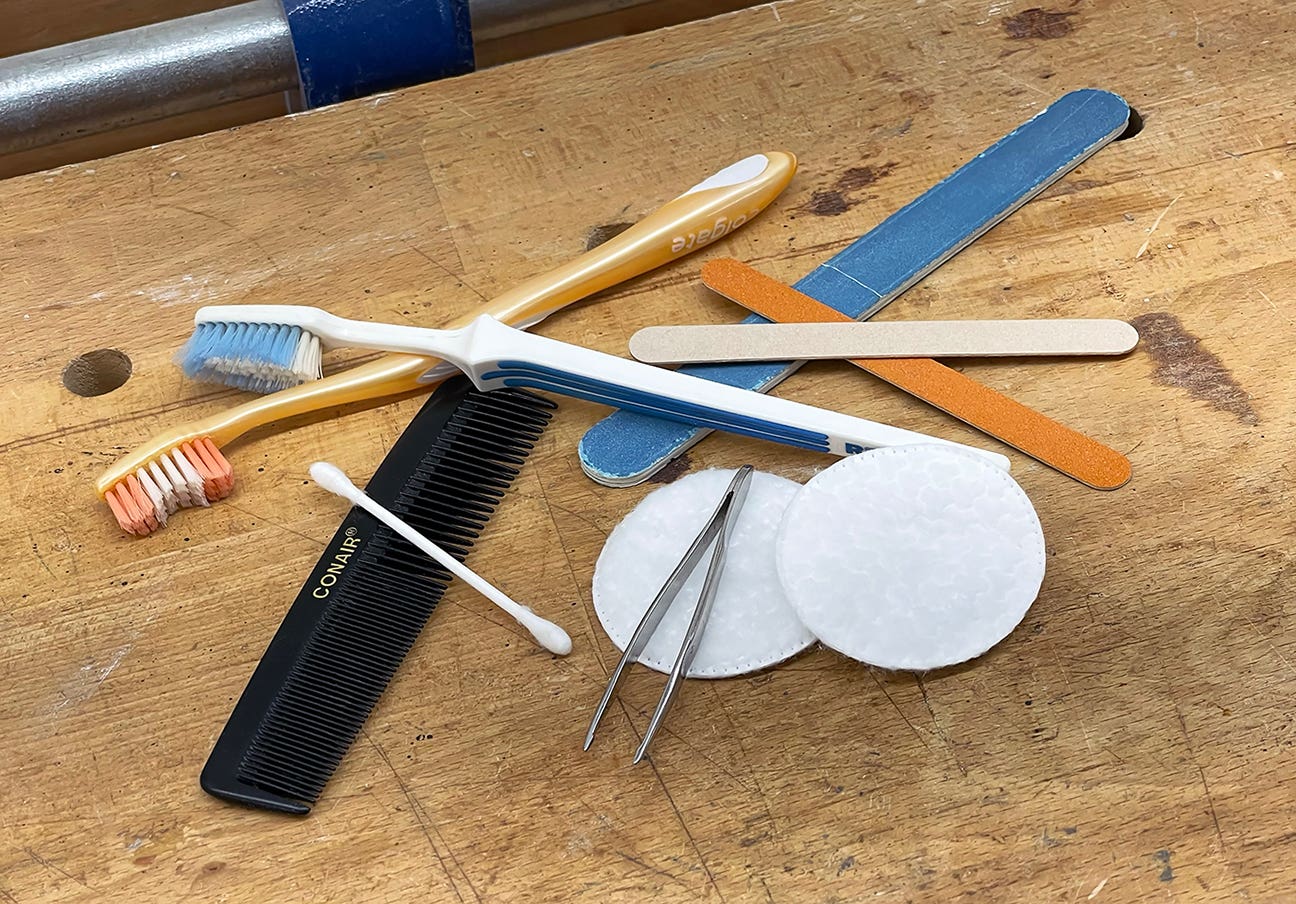Four methods to prevent fish eye
I doubt there’s any problem in finishing more frustrating than fish eye. The problem usually appears as moonlike craters in the first coat of finish seconds after application, but it can also appear as ridges (sometimes called “crawling”), and it can hold off showing itself until the second or third coat.
I doubt there’s any problem in finishing more frustrating than fish eye. The problem usually appears as moonlike craters in the first coat of finish seconds after application, but it can also appear as ridges (sometimes called “crawling”), and it can hold off showing itself until the second or third coat.
Fish eye can seem baffling and mysterious, and this accounts, at least in part, for the misunderstandings and misinformation that circulate about it. But it’s not hard to understand, and once you do, methods to avoid it are pretty obvious.
Silicone
Fish eye is almost always caused by silicone that has managed to get into the wood – for example, through a crack in the finish. Silicone is a synthetic material made from silicon (similar to sand), oxygen, carbon and hydrogen. It can be a liquid, gel, resin or hard plastic. You are surely familiar with silicone caulk, and you may have heard of silicone breast implants. Silicone is totally inert, meaning that is doesn’t react with anything.
The liquid version of silicone is a synthetic oil, which is noticeably slicker than mineral oil when you rub some between your thumb and index finger. It’s this slick quality that causes fish eye; finishes pull away from it rather than flow over it.
When included in furniture polishes the silicone makes darker woods look richer and deeper, creates a slicker surface that resists scratches better than non-silicone polishes, and remains on the surface much longer so the other two qualities don’t disappear for a week or longer. These qualities are the reason silicone furniture polishes are so popular with consumers.
Almost all aerosol furniture polishes and some non-aerosols contain silicone. Also, some hand lotions, cosmetics and even deck stains contain silicone. This ubiquity of silicone could horrify you, so it’s important to remember that it’s simply oil, and it can be handled just like any oil that gets into the wood.
The best warning you will get of possible silicone contamination is when you apply a stain. A wet coat of stain (or a wet application of mineral spirits) will fish eye or crawl before you wipe off the excess.
Fish eye prevention
If you suspect silicone contamination before you apply a finish, take one or more of the following preventive steps.
Add silicone to your finish. This lowers the surface tension, or slickness, of the finish to match that of the wood surface, so the finish then flows out level. Once you’ve added silicone to one coat of finish, you have to add it to each additional coat.
Silicone intended for this purpose is sold under a number of trade names, including Fish-Eye Destroyer, Fish-Eye Flo Out, Sil Flo and Smoothie. You can add the silicone directly to any solvent lacquer and stir it in, but you will need to thin it a little with mineral spirits before adding it to varnish or polyurethane. For water-based finishes you will need to get a special emulsified silicone from the finish manufacturer.
Add one-to-two full eyedroppers to a quart of finish. This will make the finish feel a little slicker and it may raise the gloss slightly. You could decide to add silicone to a finish on purpose when you want it to have these characteristics.
Keep in mind that adding silicone to your finish will contaminate your spray gun and require you to clean it extra well to remove all the oil. But contrary to popular myth, you can completely remove all the silicone from the spray gun by spraying solvent through it. I’ve done it countless times.
You should work with a good exhaust to keep overspray and bounce-back from contaminating other objects in your shop.
Seal the silicone in the wood with a sprayed coat of shellac. The alcohol in the shellac isn’t a solvent for the oil. If you’re spraying lacquer over the shellac, avoid really wet coats because the lacquer thinner in the finish could dissolve through the shellac.
Remove the silicone from the wood in the same way you would remove any oil. Wash the wood with a solvent such as mineral spirits or naphtha. This type of cleaning is only partially effective, however, because the solvent just thins the oil. It doesn’t pull the oil out of the pores. So the trick is to continually change to clean cloths so you don’t just move the oil around; you pick it up and remove it. The more times you wash the wood in this manner, the more you will reduce the oil left in the pores until finally there is not enough to cause a problem.
You can also use a strong detergent, such as trisodium phosphate (TSP) and water. This will break down and remove the oil from the wood fairly effectively, just as soap removes oil from your hands. But it will introduce water into the wood, causing you to have to sand off the raised grain.
Dust on four or five coats of lacquer, then dissolve the coats together with a wet coat. This works best with nitrocellulose and CAB-acrylic lacquer. (You can use this method over a lacquer finish that has already fish eyed if you first sand the fish-eye ridges fairly level.)
The trick is to build a thickness of lacquer without wetting the surface. Then apply a coat wet enough to dissolve all of the dust coats and combine them together, but not so wet that it causes the fish eye to come through. It will take some practice to get this right, but I know it works because I did it many times before I learned of the existence of the silicone products I could add to the lacquer.
The best method
Adding silicone to the finish is usually the best method for preventing fish eye because it is the most predictably effective. A shellac sealer also works well as long as you don’t dissolve it with too wet a coat of lacquer. Washing silicone out of wood is time consuming, costly in solvent used, and unpredictable since you don’t know how much to wash because every situation is different. Dusting on the finish is risky because of the difficulty getting just the right wetness when you re-dissolve the dusted coats.
To avoid the unpleasant surprise of fish eye, especially if you are refinishing rather than building new, you may choose to make it a practice to use one or more of these methods regularly.
Bob Flexner is the author of “Understanding Wood Finishing” and “Wood Finishing 101.”
This article originally appeared in the February 2018 issue.







